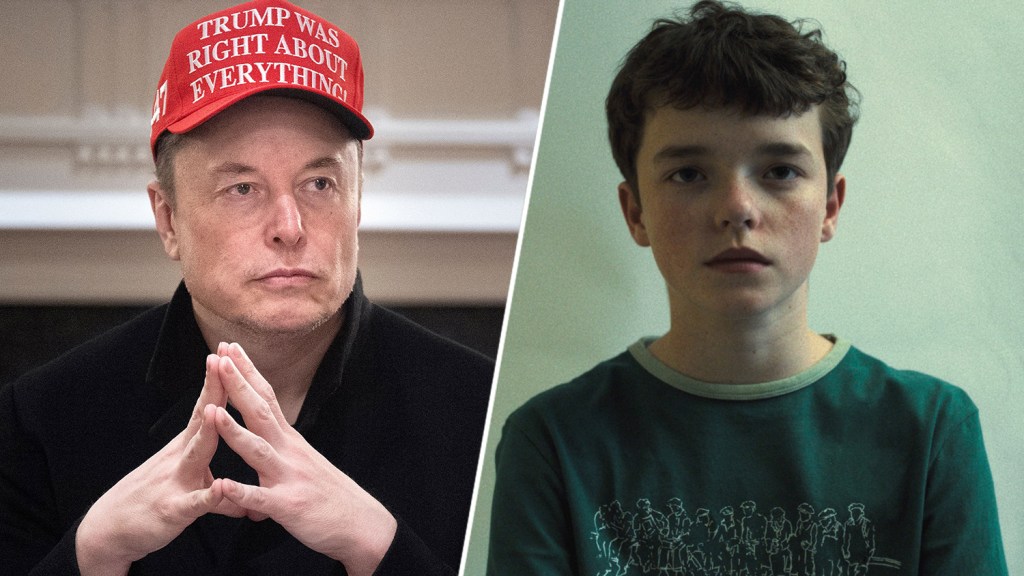Netflix’s ‘Adolescence’ Sparks Controversy, Fuels Debate on Portrayal of Knife Crime and Online Radicalization
Netflix’s latest hit series, "Adolescence," has ignited a firestorm of controversy, prompting accusations of "anti-white propaganda" and sparking a broader debate about the portrayal of knife crime and online radicalization. The show, co-created by Jack Thorne and Stephen Graham, delves into the complex and sensitive issue of youth violence, focusing on the fictional story of Jamie Miller, a 13-year-old white boy arrested for the murder of a female classmate. The series’ exploration of masculinity, violence, and the influence of the internet has resonated with audiences, propelling it to the top of Netflix’s charts in its debut week. However, it has also drawn sharp criticism and accusations of manipulating real-world events for political purposes.
The controversy escalated dramatically when Elon Musk, the owner of social media platform X (formerly Twitter), amplified a post accusing Thorne of "race swapping" the killer’s ethnicity. Musk’s comment, simply "Wow," offered no further context but reached his vast audience of over 200 million followers, significantly broadening the reach of the accusations. This amplification fueled an already simmering debate about the series’ intentions and its potential impact on perceptions of knife crime. Critics allege that "Adolescence" misrepresents the demographics of knife crime in the UK, suggesting it disproportionately affects young white boys, while proponents maintain that the series aims to explore the broader issue of toxic masculinity and the vulnerability of young men to online radicalization.
Thorne vehemently denies the accusations of race-based manipulation, emphasizing that the series is "not making a point about race" but rather about "masculinity." He argues that the show seeks to "get inside a problem" rather than offer simple answers or assign blame to specific demographic groups. In a recent podcast appearance, Thorne condemned the "absurd" insinuations that knife crime in the UK is exclusively committed by Black boys, asserting that the series aims to explore the complex factors contributing to youth violence, regardless of ethnicity. He further clarifies that "Adolescence" is not based on a specific case but is a fictional narrative designed to highlight the growing concerns surrounding online radicalization and its potential link to violent acts.
“Adolescence” isn’t based on a singular true crime event but takes inspiration from various sources and aims to address a crucial question: “Why is violence from young men or boys towards young women or girls going up?” As Thorne explained in an interview, he and Graham set out to explore this question thoroughly, avoid simplistic answers, and illuminate the complexities of the issue. He hopes the series sheds light on a widely acknowledged problem, offering a new perspective through the character of Jamie. Seeing viewers engage with Jamie’s story and attempt to understand the wider issue through his lens is, according to Thorne, a rewarding outcome.
The series’ creators maintain that their goal is to raise awareness about a critical social issue, emphasizing the need for open conversation and a deeper understanding of the factors that contribute to youth violence. They argue that "Adolescence" provides a platform for these conversations, prompting viewers to confront uncomfortable truths and consider the complex interplay of social, cultural, and psychological influences. While acknowledging the potential for diverse interpretations, they stress the importance of engaging with the series’ themes in a thoughtful and nuanced manner, avoiding simplistic narratives or politically charged rhetoric.
The controversy surrounding "Adolescence" highlights the challenges of depicting sensitive social issues in a fictionalized format. While the series has undeniably sparked important dialogue about knife crime, online radicalization, and toxic masculinity, it has also become entangled in accusations of bias and misrepresentation. The debate raises crucial questions about the responsibility of storytellers when addressing real-world problems and the potential for fiction to either illuminate or obscure complex social realities. As the conversation continues, it remains to be seen whether "Adolescence" will ultimately contribute to a more nuanced understanding of youth violence or become further entrenched in polarized narratives.


